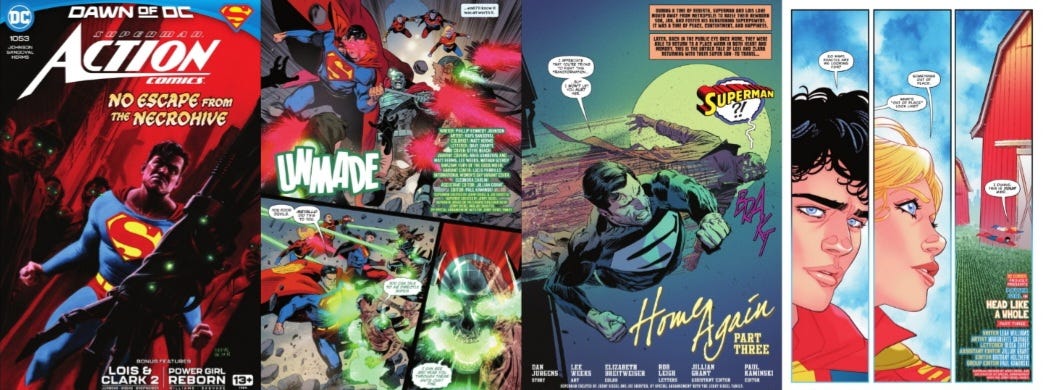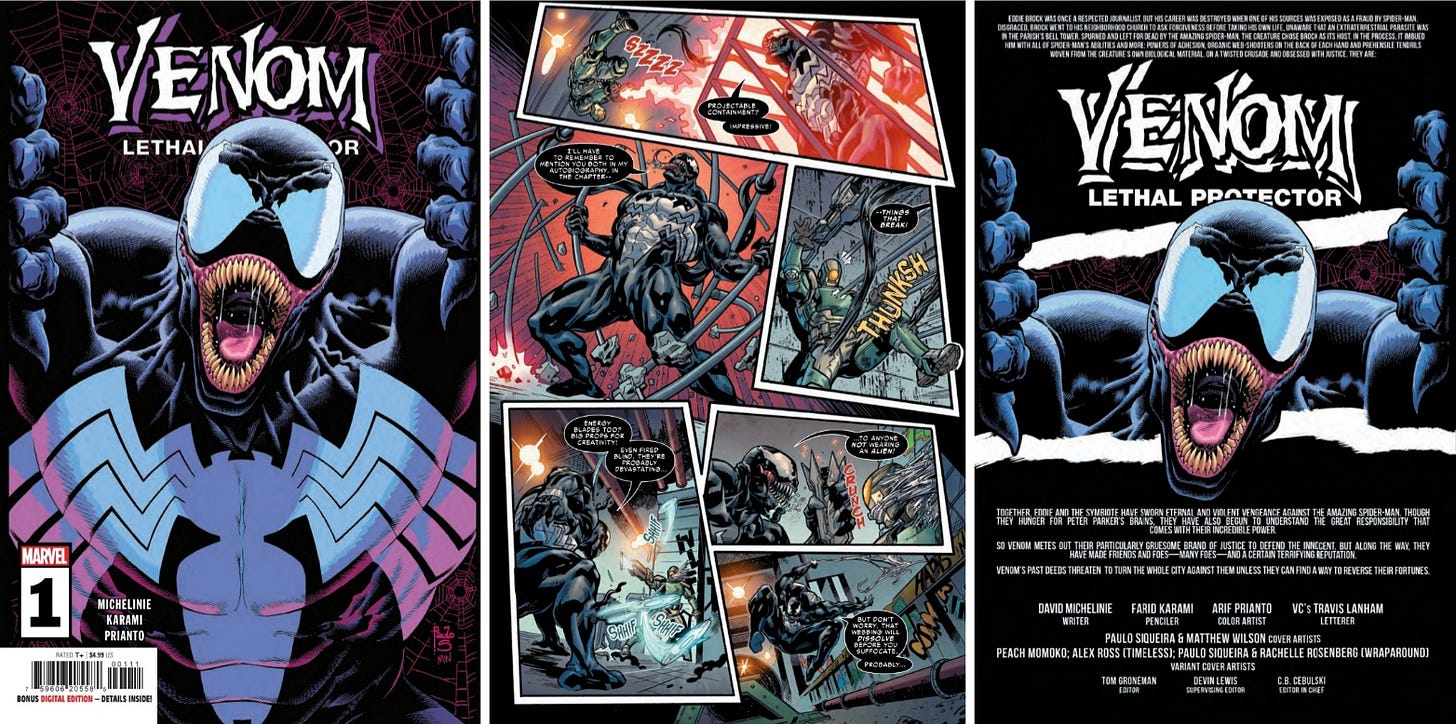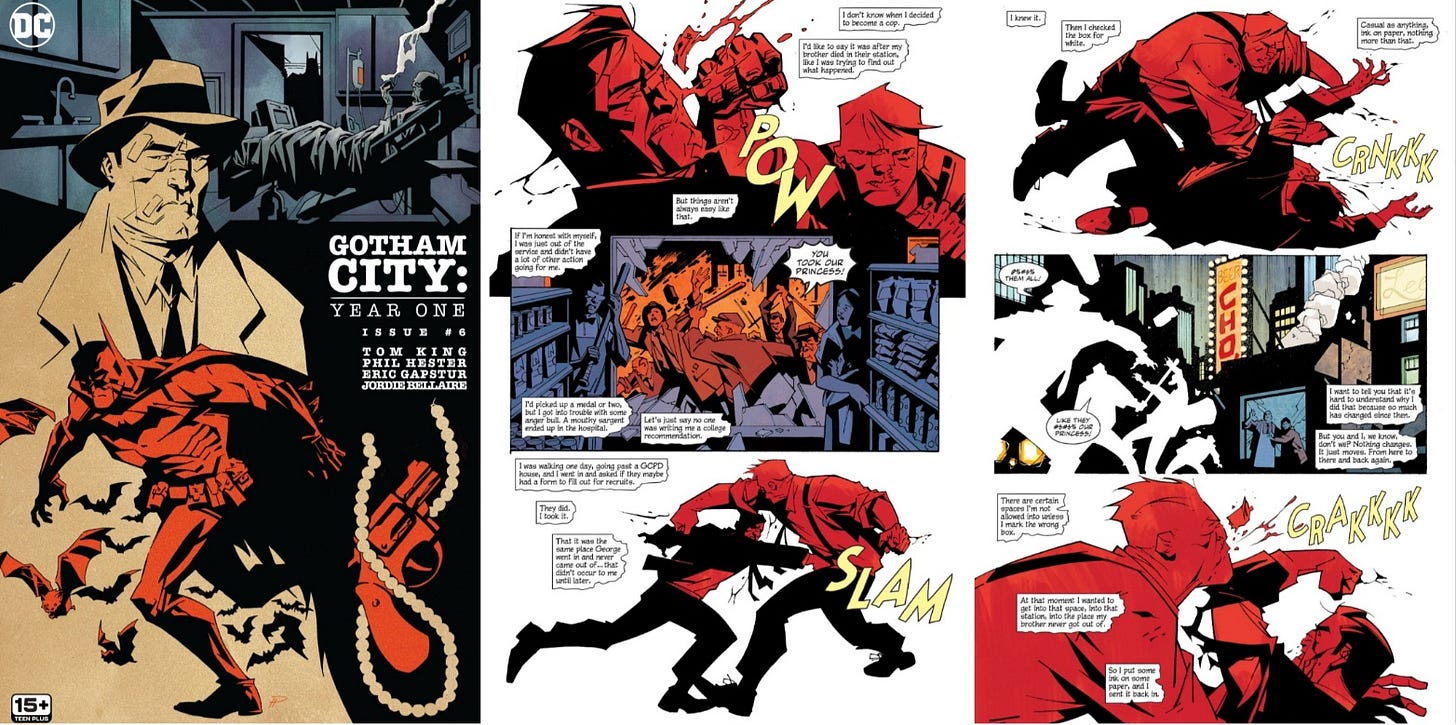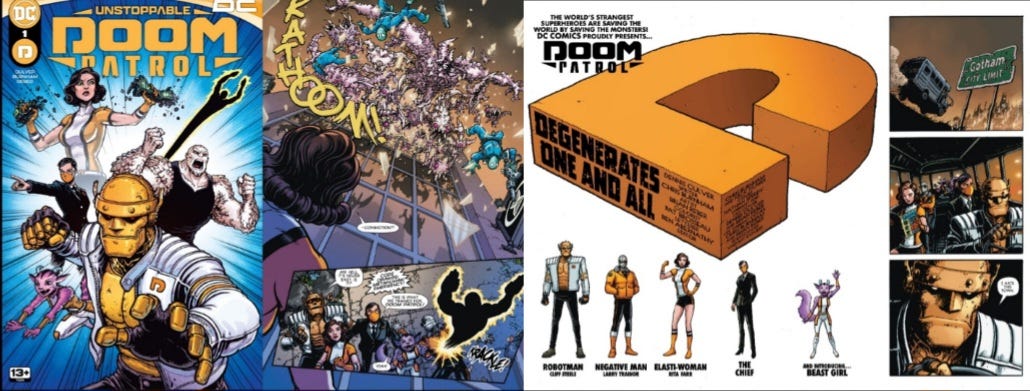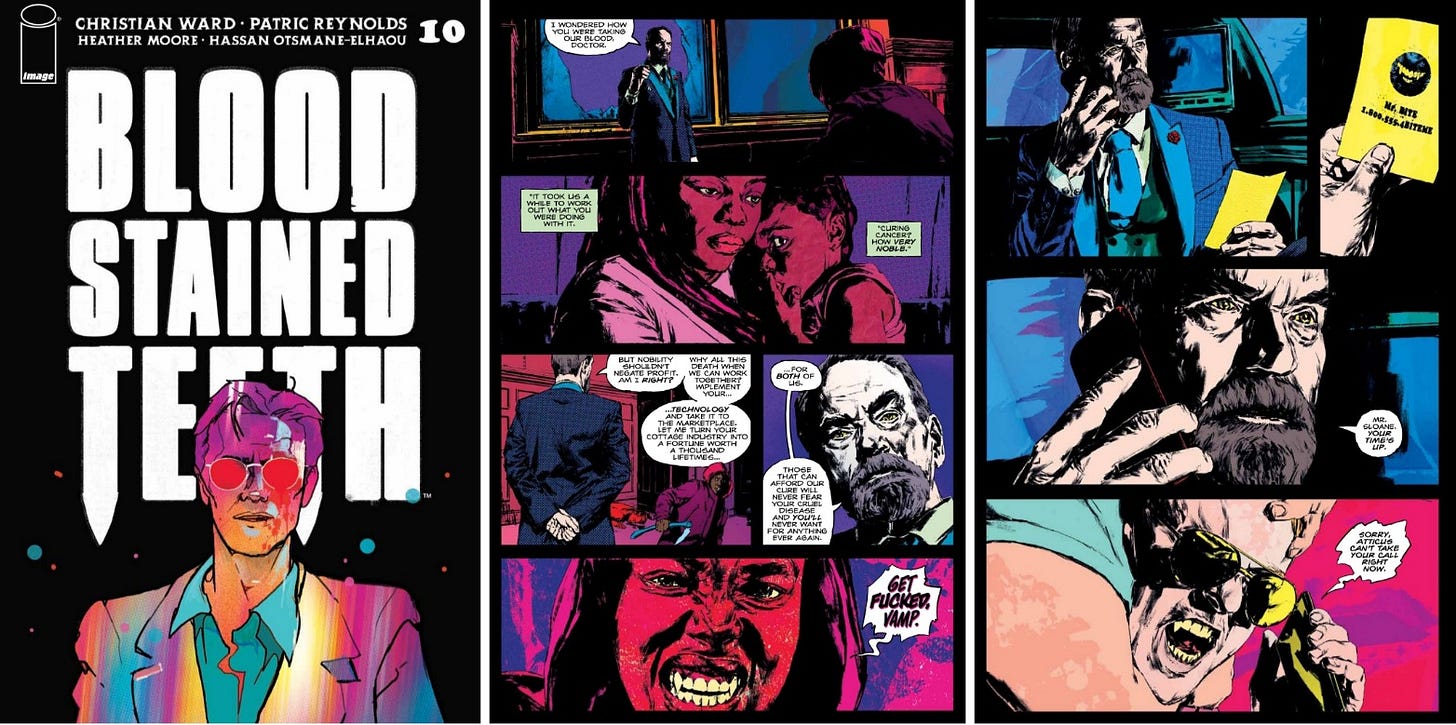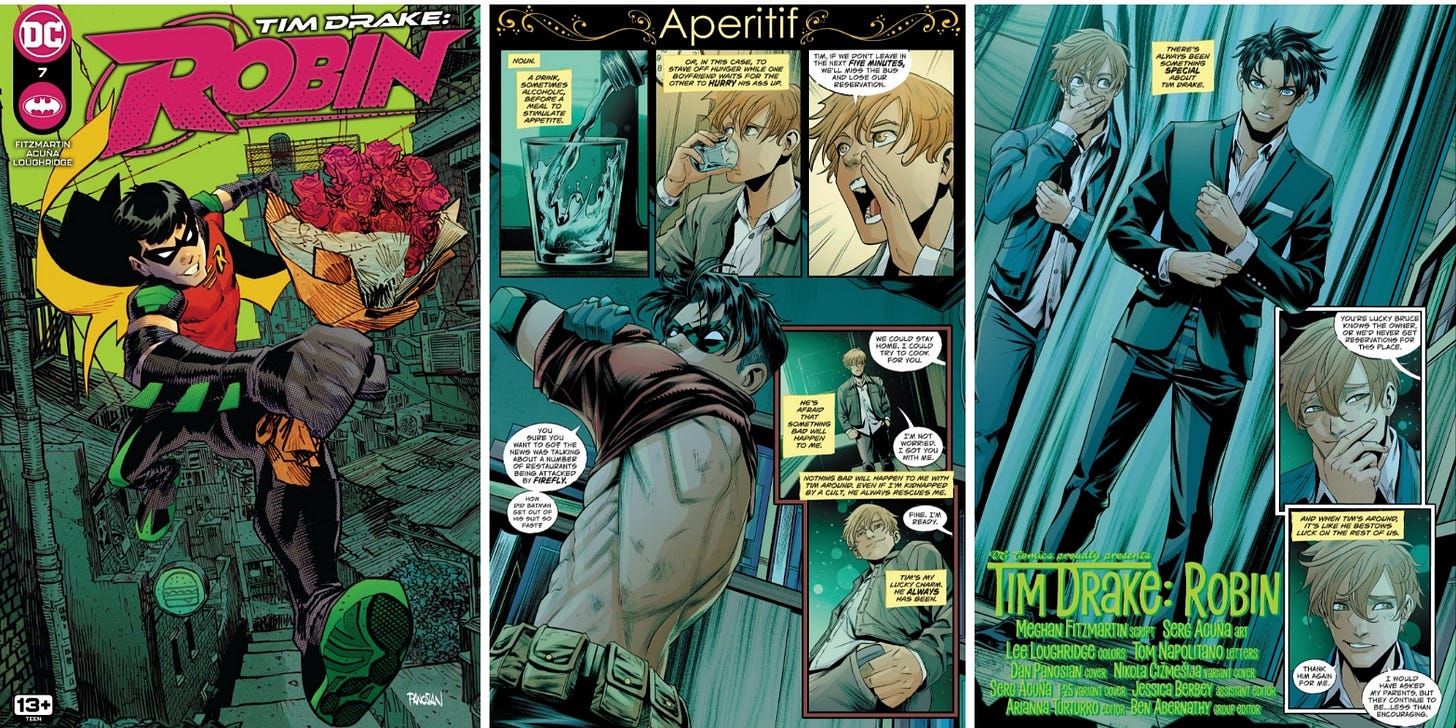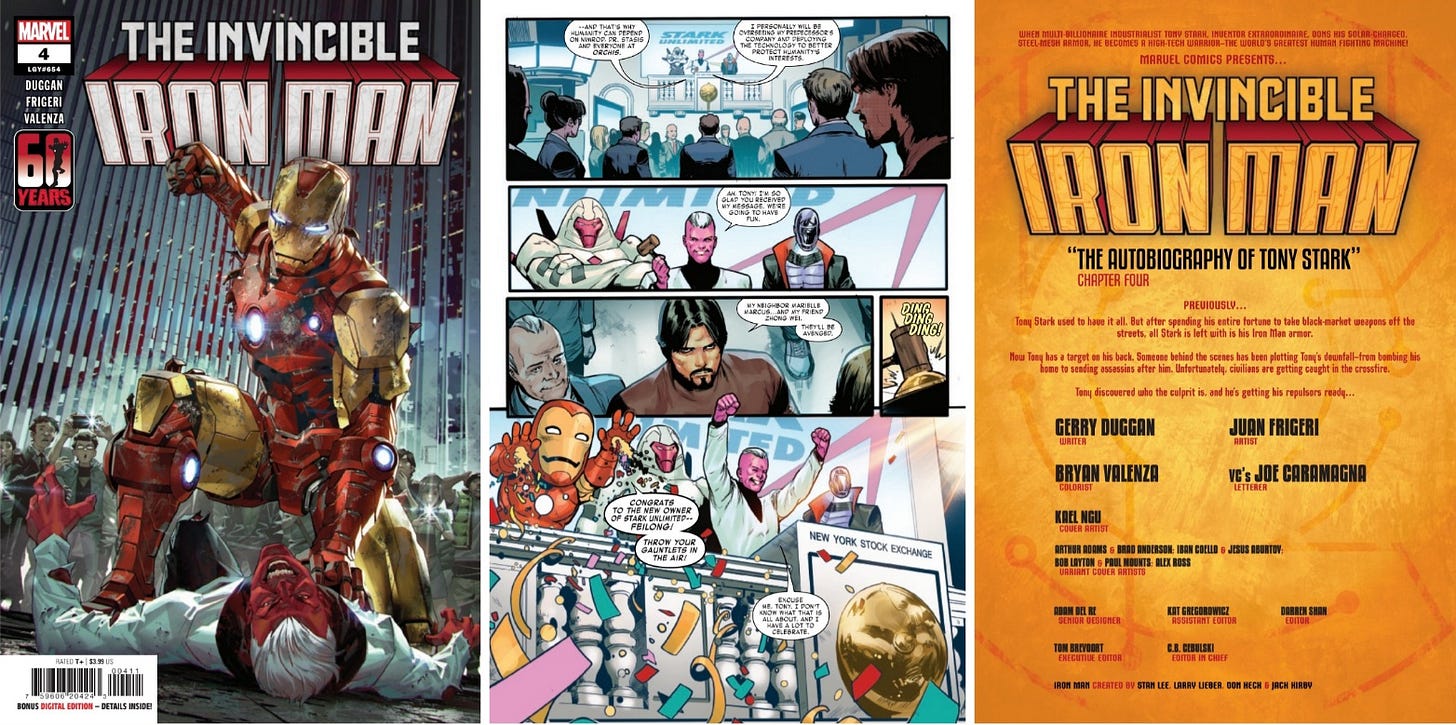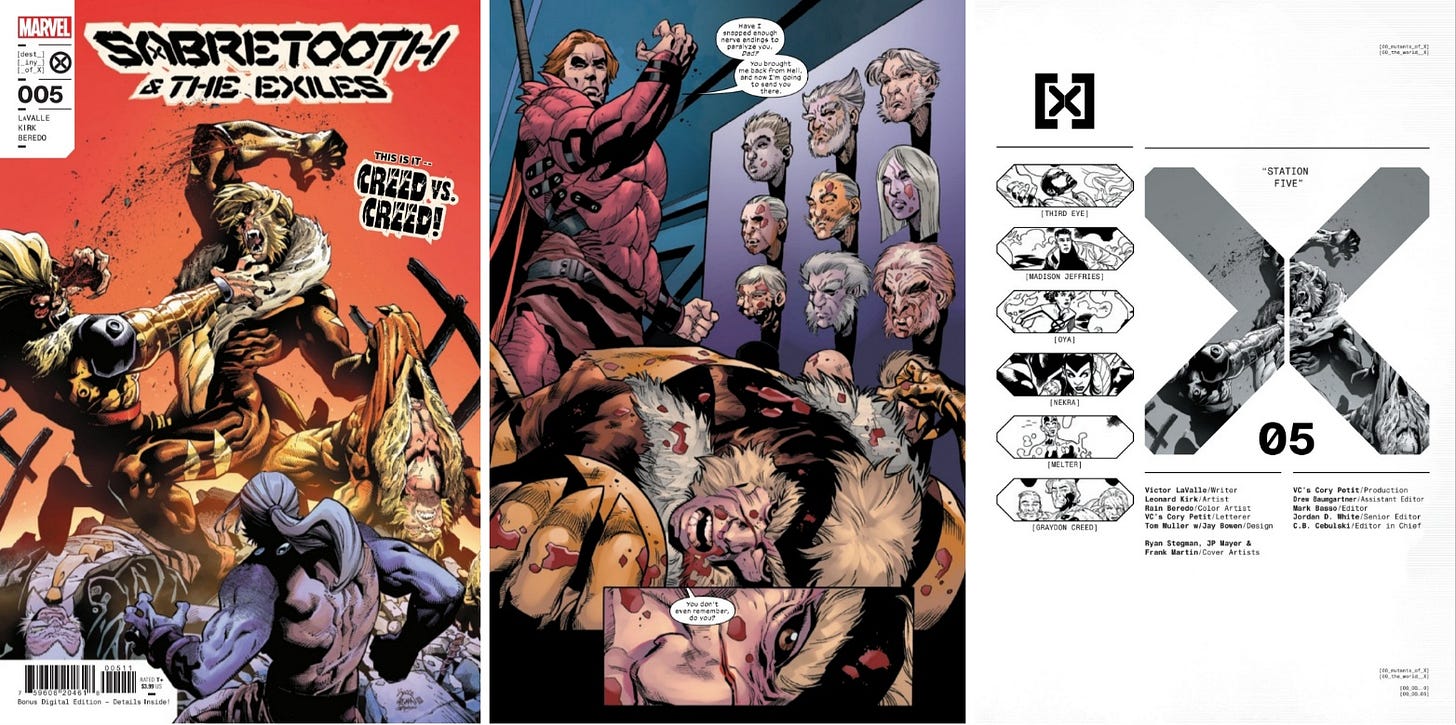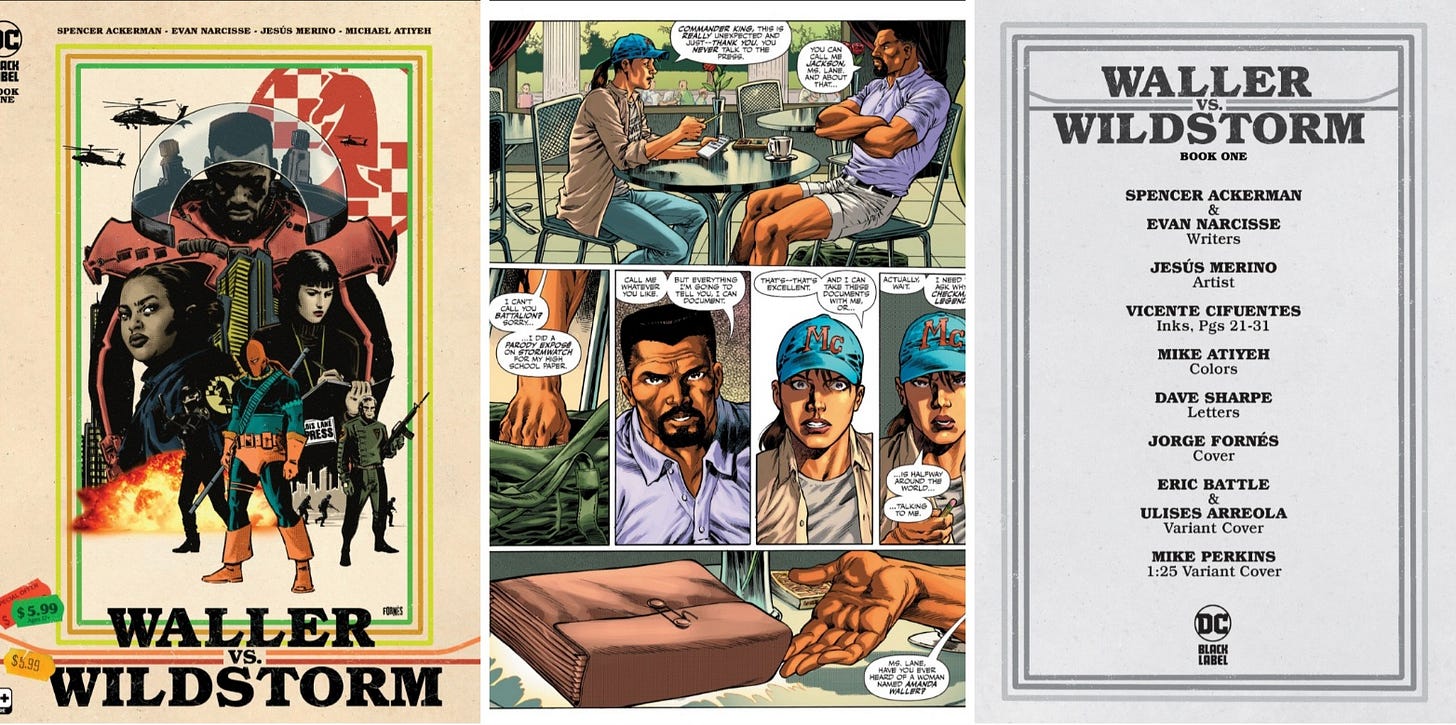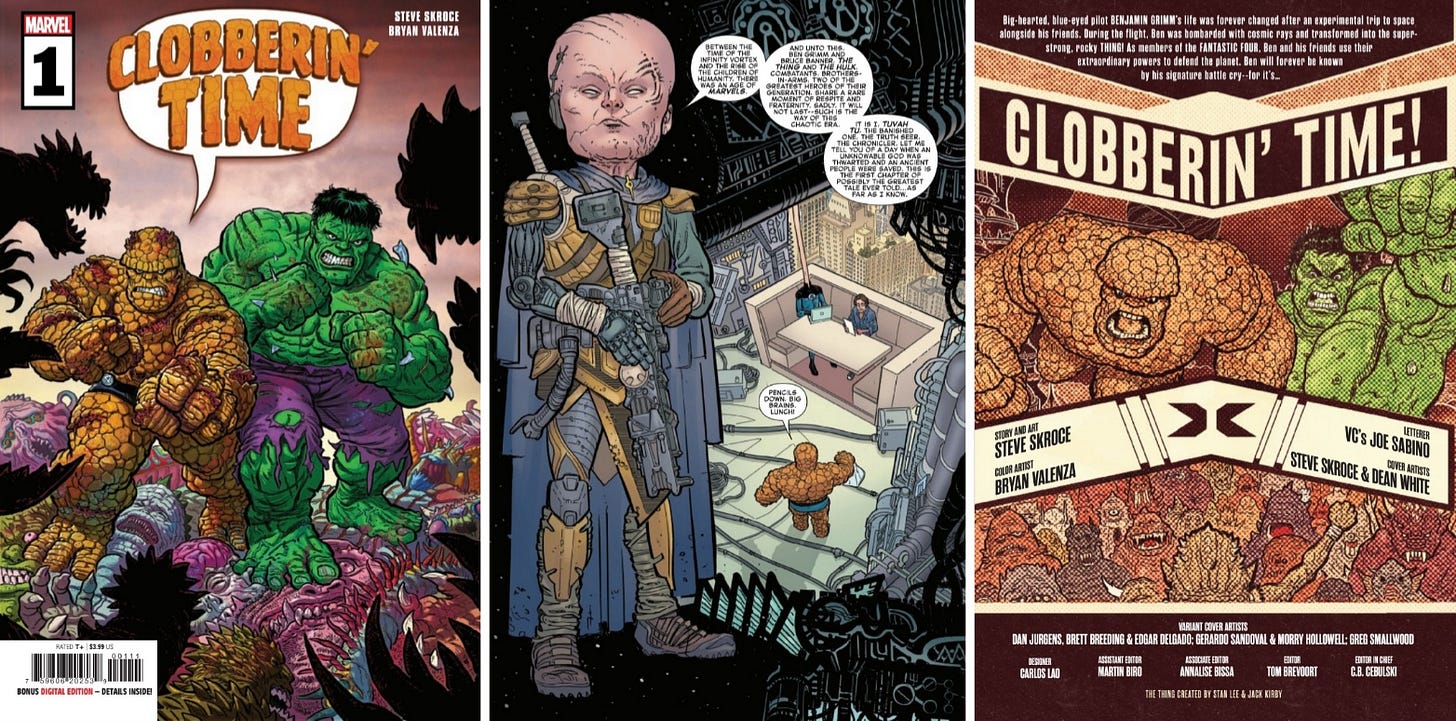Welcome to this week’s review roundup!
Every week I tackle a stack of books and post small and large reviews all over the web. But you can always find each and every one right here. You can even subscribe if you want them delivered!
If you enjoy what you find, please check out the bottom of the page for ways you can support this site.
Action Comics #1053
While in a general sense the backup stories have improved issue to issue, there is no sense of momentum. Whether that’s the stories themselves or the space they’re allotted is unclear.
The Power Girl backup is the better of the two because it is largely abstract and focused on character interaction and development. While I have criticized Williams for lacking depth in her writing in the past (I did so in the first issue of this series), this story has been proving that criticism wrong. Sauvage’s art, especially her use of soft bright colors, gives this story an identity that even the main story doesn’t have.
The backup story involving Jon comes across like filler designed to keep fans of young Jon happy. Three issues in it’s still unclear what the plot is. Jurgens is juggling a lot of balls, and they each get so little space to advance that nothing seems to actually happen. Weeks’ art continues to carry the story, but even that offers little.
The advancing Metallo plot in the main story is intriguing, but by far the highlight of this issue is Jon’s conflicted response to his parents adopting the twins from Warworld. Johnson adds a lot of development to Jon in a very short space. Sandoval gives this sequence a lot of weight.
Venom Lethal Protector #1
Michelinie turns back the clock to the edgy, extreme Venom of the 90s. Unfortunately, despite writing that version of the character more than anyone else, he doesn’t do anything here to make the character stand out,
The story in the issue opens with Venom interrupting Silver Sable on a heist. It then continues to Venom encountering Pablo, someone that Venom once helped turn his life around. There is also a shady organization taking an interest in Venom. And the Vulture is involved somehow.
Venom himself gets lost among all these subplots, and as a result there is no joy in revisiting the character in this time period.
On the artistic side, Karami does a good job depicting Venom. It is reminiscent of both Bagley and Larsen, so for a Venom story set in roughly that time period it works well.
There’s so little explanation of exactly what this story is about–indeed, it’s unclear whether it’s about Venom or just using him as a vehicle–that continuing with the series will likely depend on your fascination with either Venom or Silver Sable.
Gotham City Year One #6
The success or failure of detective stories invariably comes down to the ending. Did the reader solve the mystery early and grow bored in the end? Is the reader convinced that the guilty person’s motives would drive them to commit the crime? Does the ending make sense given all the clues dropped along the way? And in a hardboiled detective story there is one more critical question: will a cynical reader or detective see the story’s events as just another product of a corrupt society? Gotham City Year One #6 lands on the right side of all of those questions.
The Unstoppable Doom Patrol #1
Culver pushes the limit of how many characters and story elements can be introduced in a first issue, but he never loses track of the issue’s primary narrative which is Doom Patrol rescuing a metahuman from Metagen in Gotham City. The company has been experimenting on people with newly acquired abilities as a result of the Lazarus eruption.
One of the strongest moments in the series is when the Chief pushes back against Batman who attempts to claim what passes for jurisdiction in this scenario. Chief rightly points out that he has no real experience with metahumans and no business interfering in their attempts to help one. Telling off Batman is an effective and fast way to establish someone’s strength of character–it’s the emotional and intellectual equivalent of having someone beat up the biggest, strongest character in a room.
Burnham puts an incredible amount of detail into the art on this issue–whether the age worn lines on a character’s face or debris from a skyscraper blowing up.
If there is a downside to the issue it’s that it is primarily a group of inciting incidents. A larger plot is unclear at the moment. But the characters are memorable, and the issue builds a lot of momentum. It is worth checking out the next issue.
Blood Stained Teeth #10
Every issue of Blood Stained Teeth saw Atticus Sloane fight humans, vampires, and his own horrible decisions in a bid simply to stay alive. It’s been an ugly journey. Now Blood Stained Teeth #10 brings that journey to an end. Atticus may very well manage to win his survival. The harder thing to do is convince us that he deserves to.
Tim Drake: Robin #7
Acuña’s art is a breath of fresh air. Tim and Bernard are clearly recognizable as male characters. Additionally, Acuña doesn’t depict clothes or body language that fits in with borderline caricature gay stereotypes.
The issue attempts to build up Bernard as a character. He’s been a blank slate since Fitzmartin reintroduced him. For all intents and purposes, he is a new character that she created. This is successful to a point. Fitzmartin builds in some background for Bernard, but his motivations remain purely Tim-centric. Further, the realization about how much Bernard knows about Tim is rushed and out of place. Like so many things, Fitzmartin doesn’t show the journey, only the destination.
The lack of any build up to this romantic relationship continues to plague it. It’s unclear whether Fitzmartin is trying and failing to develop the relationship or if she is simply moving past that because the end result is all that interests her.
There is a clever device used to tell the story in this issue. Tim and Bernard are going out to a fancy restaurant, and Bernard wants to be a chef. Fitzmartin divides the story beats into parts of a meal: entré, dessert, etc. The thematic connections don’t always work, but it is the most ambitious storytelling choice she has made in the series.
Detective Comics #1070
The issue opens on a scene with Solomon Grundy before cutting to Bruce kneeling at his parents’ gravesite. Ram V uses a very obvious metaphor for Bruce’s current struggles as Batman, but it works well enough. It communicates what the reader needs to know about his state of mind simply without having to spell it out.
This issue drops a lot of exposition about the Orghams–their past, their motivations. It fills in a lot of blanks and provides clarity that the larger plot has needed. The means of delivering this exposition is very clever. Ram V avoids the feeling of an info dump by having different pieces come from different people. No one character tells Batman everything. He gets different information from Arzen, Talia, and Oracle. This scavenger hunt for backstory breaks up the longer dialogue sequences.
Raffaele’s art is well-suited for this issue. His limited use of shading gives the characters’ faces a kind of softness and good humor–a boon since the issue is dialogue centric and much of its visuals are closeup heavy and rely on facial expressions to communicate mood and intent when the characters reveal their pieces of information to Batman.
The lead-in to the new Vigil series is a little clunky.
Invincible Iron Man
Duggan began his run by knocking Tony down toward rock bottom–not so much because of anything Tony did but because someone else was manipulating circumstances to make him look bad. But rather than linger in that status quo for an extended period, Duggan pushed Tony past any sense of helplessness or wallowing by the end of the second issue and made him proactive.
This immediate action on Tony’s part is far more compelling than lingering on him in some kind of down and out misery. We’ve seen that story before. In this case, Tony already knows who is behind his troubles–a man named Feilong who is an adversary of the X-Men and an opponent of mutants in general. This opens up more storytelling options for Duggan. Typically the characters in Tony’s orbit are more Avengers centric.
Frigeri shows a particular flair for expressive characters here–an angry Tony on one hand and a strangely excited Feilong on the other. These personal encounters are more compelling than the action sequences (which is not to say that the action sequences are of poor quality). Given that Tony’s arc is of a more personal nature at the moment, these kind of face to face conflicts prove fascinating thanks to an artist proficient with the nuances of facial expression and body language.
Sabretooth and the Exiles #5
An uneven series ends with a whimper. What little depth the series had is tossed away in favor of a multiverse related ending featuring several Victor Creeds. The tangential connection LaValle was making to medical ethics isn’t brought up at all in this issue. Nor is there additional follow-up to Sabretooth’s discussion with the liberated mutants about the unwelcoming situation on Krakoa.
The Graydon Creed component of the story is much ado about nothing and ultimately goes nowhere. While his plan to eliminate all the Creeds in the multiverse is interesting, the events of this issue beg the question of how he was successful in his quest to begin with.
This series, coming as it did after the very strong preceding series, never came together in a cohesive whole. Nor did it feel as ambitious. There is nothing here that we haven’t seen many times before.
Kirk and Beredo don’t skimp on the gore here, and that’s really the best part of the issue. If your story is going to feature multiple Victor Creeds, it better be bloody.
Blue Beetle Graduation Day #5
Blue Beetle Graduation Day #5 gets to the heart of what Jaime has been unable to voice until this moment: that he’s afraid. All series he’s been surrounded by outside influences, all of whom think they know what’s best for him: his parents wanting him to go to college, Batman and Superman wanting him to take time away from superheroing, and the Reach for wanting him to join them. This mirrors what everyone goes through as they transition into adulthood. At some point the questions of who and what you want to be have to be answered.
Waller vs. Wildstorm #1
This comic is almost entirely dialogue yet manages to say very little. The overall framing device is a conversation between Lois Lane (who is not yet the Daily Planet’s star reporter) and Bishop Kane, formerly a member of Stormwatch called Battalion. Ostensibly the plot is about Kane wanting Amanda Waller taken down from a place of leadership because of the underhanded, unconscionable, and unethical activities she’s involved in. Kane’s relationship with Waller stretches back to an incident that saw her use a seemingly innocent conversation with him to get him removed from Stormwatch.
Unfortunately the plot is secondary at best to a tortuous conversation about the ethics of Waller’s activities specifically versus other general American activities that aren’t above board, Kane’s unwillingness to try and stop those activities before they personally impacted him, and whether the United States is any different than its enemies when engaging in extralegal activities against their enemies both foreign and domestic. Presumably Ackerman and Narcisse are trying to make a point (likely through Lois who takes the unassailable high road on all these issues), but the discussion goes round and round, getting nowhere.
The issue ends having built no real plot and lacking momentum for the next issue.
Clobberin’ Time #1
The highlight of the issue is Skroce’s visuals, especially the monsters. They are remarkably detailed and otherworldly in appearance. They offer a believable challenge to Thing and Hulk. The issue is narrated by the Chronicler, a banished Watcher who is clad in the finest post-apocalyptic wears.
Valenza’s coloring is a good complement to Skroce’s art. The olive and pale green landscape, along with the orange sky, accentuate the strange nature of this world. Valenza uses a wide range of colors on the various creatures that Thing and Hulk end up fighting.
Unfortunately the issue tries too hard to be funny. There are some visual gags that work, but most of the clever dialogue and sarcasm falls flat. The issue’s frequent attempts to be humorous get tiresome fairly early. Thing and Hulk are too similar to play off each other. Many of the jokes in dialogue are based on the comparative strength of the two. A better contrast would have been Banner and Thing.
Thanks For Reading!
Do you find value in what I do here and on social media and want to support it? Please consider subscribing to these reviews or other posts.
If you really enjoy the content, you can also share it with others who enjoy comics!
And if you think you’ll be coming back often and want to help this grow , please consider donating. This is all driven by a love of comics, but it also takes a great deal of time.
Thank you to everyone for your support.
If you like my comic content and are into video games, I do walkthroughs with detailed story analysis at Theron Plays Games.
Find my content all over the internet.




